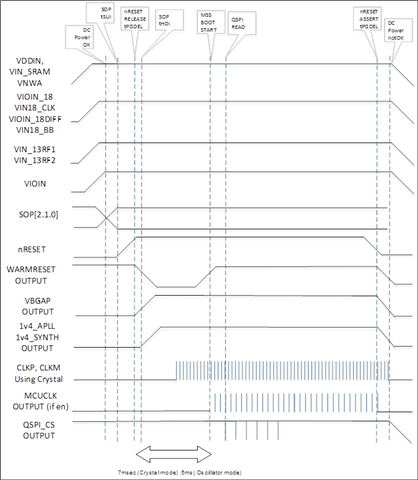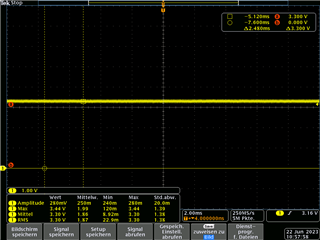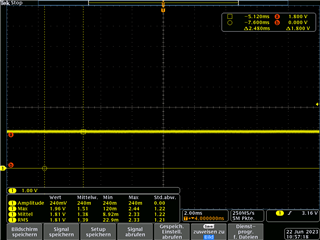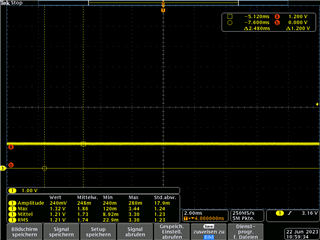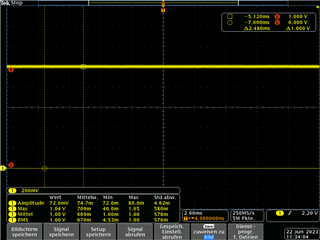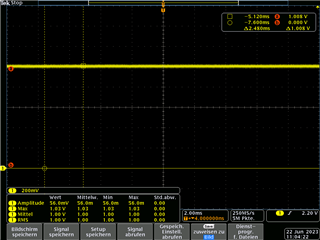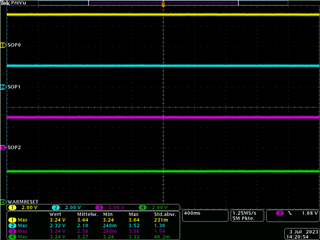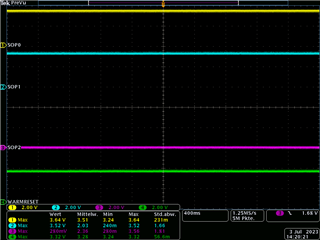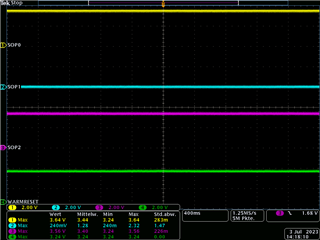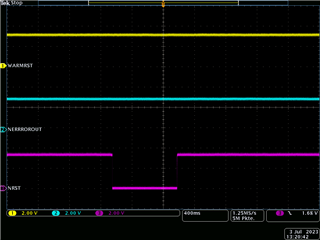Hi altogether,
I am experiencing a similar behaviour as in https://e2e.ti.com/support/sensors-group/sensors/f/sensors-forum/1115651/iwr6843-vbgap-and-vout_14apll?tisearch=e2e-sitesearch&keymatch=IWR6843%20VBGAP
- After powering up all voltage rails are exact and stable: 3.3V, 1.8V(LDO), 1.2V, 1.0V(LDO) so I proceed in the design checklist: HardwareDesignChecklist_V0p8_IWR6843
- SOP mode 2 for development is set: SOP0=3,3V, SOP1=3,3V SOP2=0V
- Clock is running.
- N9 WARMRESET is high
- B10 VBGAP is approx. 660mV not 900mV as expected
- A10 APLL, VSYNTH are not 1.4V but only 0.18V - so I expect A14 not to be working either it is at 390mV too low.
- N6 NERROR_OUT stays low constantly - I suppose there is a cricital error?
- A reset with NRESET does not change any of the signals - I have two boards with the same behaviour.
As with the post https://e2e.ti.com/support/sensors-group/sensors/f/sensors-forum/1115651/iwr6843-vbgap-and-vout_14apll?tisearch=e2e-sitesearch&keymatch=IWR6843%20VBGAP I tried flashing the device with the MSS/DSS debug file from the mmWave SDK via an XDS110 probe.
- The XDS110 probe is found at the COM port in windows but I received an error that the serial connection cannot be established.
- So I ran the probe test in CodeComposerStudio 12 on the XDS - when the target supply is off I receive an error regarding that, so the probe connection itself seems to be OK.
- With the power supply of the target (IWR) present, I get an error that the JTAG connection is not working. Checking with an oscilloscope the
- TCK looks good.
- But the other signals just twitch as if they cannot be pulled low.
- TDO is overlayed with the SOP0 signal and pulled high by a jumper for SOP mode flashing (101). The signal layout is the same as in the EVM but with 10k both in series and 100k pulldown.
Regarding the connection I followed the XDS target connection guide https://software-dl.ti.com/ccs/esd/documents/xdsdebugprobes/emu_xds_target_connection_guide.html. As the routing length is under 6” I used the unbuffered connection from fig 1. As stated under “JTAG and nTRST Special Considerations (includes TMS and TDI)” pullups on TMS/TDI have been provided as well as an pulldown on TCK and TDO is left as is.
Right now I do not now how to continue in debugging. Any help/hints is thus appreciated.
Best regards
Steve



